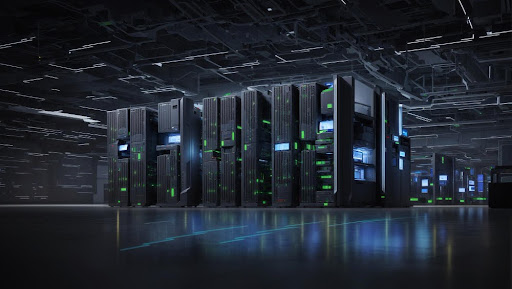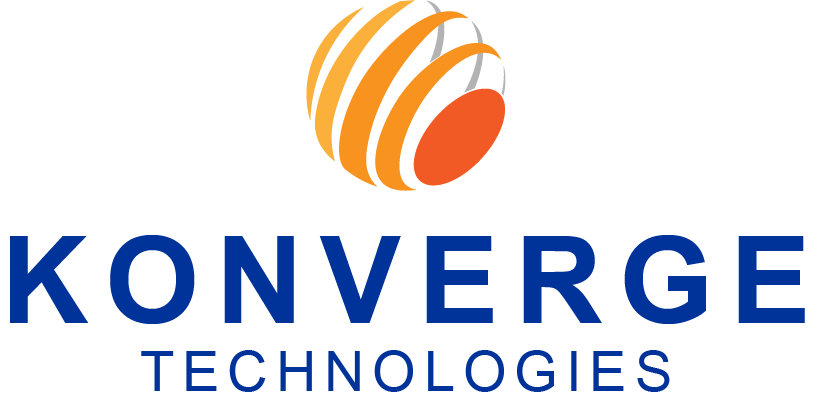
Key Components and Features of an Enterprise Data Center

Ever wondered what drives the business-critical applications, storage, and services your company depends on daily? At the center of every contemporary IT strategy is the enterprise data center—a dedicated facility that integrates hardware, software, power, cooling, and operations to provide secure, robust, and high-performance computing. This guide dissects the important elements and aspects you must design, operate, and grow a data center that enables business continuity and digital expansion.
Core Physical Building Blocks
Servers and Compute
Servers are the computing foundation. Blade servers, rack servers, and converged infrastructure are employed in contemporary data centers to execute virtual machines and containers. CPU/GPU options and memory configurations are chosen to fit workloads like databases, analytics, or virtual desktop infrastructure based on density.
Storage Systems
Storage encompasses SAN, NAS, and software-defined storage, and tiering among SSDs and HDDs. Well-designed storage provides the throughput and capacity for transactional systems, backups, and archives and enables features such as snapshots and replication.
Network Fabric
A highly resilient network fabric, i.e. switches, routers, load balancers, and fabric controllers, interconnects compute and storage. Low-latency, high-throughput designs, with redundancy and segmentation, are necessary for traffic isolation and performance optimization.
Power, Cooling, and Racks
Redundant power sources, UPS devices, PDUs, and effective cooling technologies (CRAC, hot/cold aisle containment) maintain hardware up. Rack cabling, cable management, and physical containment directly contribute to energy efficiency and service availability.
Virtualization and Software Layers
- Hypervisors and Virtual Machines
Virtualization separates workloads from underlying hardware, allowing for improved usage and quick provisioning. Hypervisors run numerous VMs, permitting admins to assign compute and memory dynamically
- Software-Defined Networking and Storage
SDN and SDS encapsulate underlying hardware so that routing, policies, and storage pools can be programmed. This provides agility, accelerated provisioning, and ease of scaling.
- Orchestration and Automation
Infrastructure-as-code tools for configuration management and orchestration automate lifecycle operations, policy enforcement, and deployment, minimizing human error and accelerating time to value.
Security and Compliance
Physical Security
Controlled access, CCTV, biometric gates, and visitor management eliminate unauthorized access. Physical security measures are the first line of defense. Environmental monitoring also detects temperature, humidity, and water leaks to avoid damage to hardware.
Network and Infrastructure Security
Firewalls, intrusion prevention, segmentation, and secure access controls defend data flows. Data at rest and in transit encryption is used to maintain confidentiality and compliance. Automated security policies, vulnerability assessment on a regular basis, and patch management mitigate ongoing threats and ensure regulatory compliance.
Identity, Access, and Audit Controls
Role-based access, single sign-on, multi-factor authentication, and detailed logging enforce least-privilege principles and support audit requirements. Ongoing monitoring of access patterns and audit trails guarantees compliance with standards such as ISO, GDPR, and PCI DSS, enhancing overall governance.
Resilience, Availability and Recovery
Redundancy and High Availability
Redundant components (power, network links, controllers) and clustering ensure continuous service. Design decisions such as N+1 or 2N redundancy are a function of criticality and cost.
Backup and Disaster Recovery
Scheduled backups, off-site replication, and rehearsed DR plans reduce data loss and recovery time. Technologies such as continuous replication and snapshots enable quick recovery.
Load Balancing and Failover
Traffic is distributed across servers to ensure performance and fail over automatically during outages by load balancers, providing service continuity.
Monitoring, Management and Operations
DCIM and Telemetry
Data Center Infrastructure Management (DCIM) software consolidates monitoring of power, cooling, asset inventory, and capacity. Real-time telemetry facilitates predictive maintenance and optimal capacity planning. The software also offers actionable insights for optimizing energy use and discovering potential points of failure before they affect operations.
Logging, SIEM and Observability
Centralized logs and SIEM solutions consolidate events for threat detection and compliance. Observability stacks monitor application and infrastructure performance for troubleshooting. Advanced analytics and anomaly detection enable teams to actively detect and fix performance bottlenecks and enhance system reliability across the enterprise.
Change Management and Patch Processes
Formal change management, configuration baselines, and automated patching ensure systems remain consistent and secure with minimal operational risk. Integrated workflows also provide assurance that updates are tested, documented, and deployed without interrupting current business processes.
Scalability, Hybrid Integration and Performance Optimization
Modular and Scalable Design
Modular rack and pod designs allow companies to scale capacity in a predictable manner. Computing, cooling, and power headroom in the design avoids expensive retrofits.
Hybrid and Multi-Cloud Connectivity
Direct cloud connect, SD-WAN, and hybrid orchestration bring on-prem data centers into alignment with public cloud services—providing burst workloads and deployment flexibility for new apps.
Performance Tuning
Compute and storage right-sizing, network fabric QoS utilization, and caching or tiering techniques enhance application responsiveness.
Conclusion
A successful enterprise data center couples physical reliability with software agility, security, and run discipline. Integral features, i.e. virtualization, SDN, DCIM, strong security controls, and proven DR, interact to provide uptime, performance, and scalability.
Organizations that want practical design, implementation, and managed services aligned to these principles can rely on hands-on experience with Konverge for constructing and running new data center environments. As your business changes, an expertly designed data center becomes a strategic enabler, facilitating innovation, resilience, and future growth.



